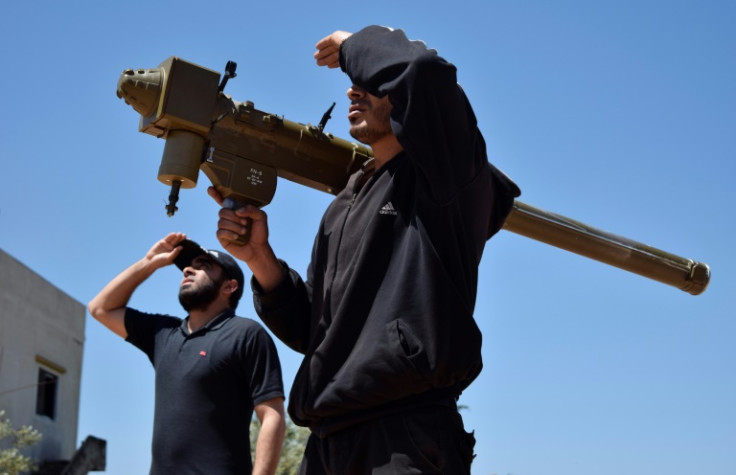
Armed groups in the Middle East and North Africa have little difficulty getting their hands on portable surface-to-air missiles despite a campaign to prevent their proliferation, according to a report published Friday.
Shoulder-fired missiles -- also known as man-portable air-defence systems, or MANPADS -- in the hands of militants are seen as a threat because of their ability to target military aircraft, but also passenger planes.
"Despite long-standing international efforts to curb the illicit proliferation of MANPADS, armed groups in the MENA region continue to acquire and use these systems," the Small Arms Survey, an independent research group based in Geneva, said in a new report.
Both older versions and advanced systems, which have more accurate targeting, are available in the region. Easy to transport and use, they are particularly attractive to non-state armed groups.
The group identified reports of 12 different models of illicit MANPADS in the arsenals of armed groups in 13 of the 26 countries in the region from 2015 to mid-2023.
"Chinese-designed MANPADS are gradually supplanting Soviet/Russian models," the organisation said, adding that most of them arrive in the region via third-party importing states.
Shoulder-fired missiles of North Korean design are also circulating in the region, particularly in Syria.
"First-generation Strela-2-pattern MANPADS remain the most widely proliferated systems," said the Survey, adding that it found reports of the Soviet-designed systems or their components in 13 of the affected MENA countries.
The research group pointed to "successful launches" of decades-old Strela-2 systems in the Gaza Strip and Iraq.
Armed groups in at least nine countries in the region had access to advanced shoulder-fired missiles during the time period studied by the group.
"This is notable because advanced MANPADS are significantly more capable than older systems," the Survey said.
"Transfers from foreign governments are the primary source of advanced MANPADS for armed groups," the group said, adding that among governments Iran was the most prolific supplier.
Tehran has been arming its so-called axis of resistance, a network of proxies and allies including the Hezbollah movement in Lebanon, the Huthis in Yemen and militias in Iraq and Syria.
"No MANPADS made by NATO states were identified outside of government control in the MENA region during the time period studied, suggesting that their export controls and stockpile security practices remain robust," the group said.
Illicit users include Al Qaeda in the Arabian Peninsula, the Islamic State group and its affiliates, Hezbollah, the Libyan National Army (LNA) and the Kurdistan Workers' Party.







